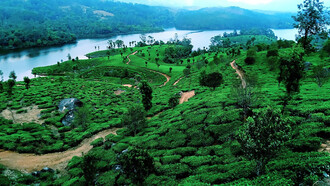'To live a better life, I need my love to be here, there, and everywhere.' These lyrics from The Beatles capture a sense of yearning and presence, sentiments that resonate with Hamburg's vibrant and eclectic spirit. Known for its historic Red-Light District, where The Beatles performed in the 1960s, Hamburg remains a hub of cultural diversity and dynamic energy.
I had the privilege of living in Hamburg for almost nine months, from 2022 to 2023, thanks to my Fellowship Program with the International Sustainability Academy (ISA). The academy is in Wilhelmsburg, a district that mirrors Hamburg's cultural mosaic. ISA is a project of the Schutzgemeinschaft Deutscher Wald Lv. Hamburg e.V. (SDW, the protective association for the German forest), and is located in Hamburg in the Wälderhaus. The goal is to support and strengthen international cooperation in the implementation of Sustainable Development Goals (SDGs).
The program attracts participants from around the globe, each bringing unique projects focused on sustainable development. This diversity is reflected in the program’s array of countries, areas of focus, languages, cultures, and traditions. In our cohort there are participants from countries like Ethiopia, Nigeria, Kenya, India, Georgia, Zimbabwe, and some parts of Arabic countries as well as Latin America. I think that time I was the only participants from Asia.
When you look at Hamburg from the plane, you cannot see anything except the white clouds that cover the whole city. In your mind you will be thinking, 'What is inside the city?' You will only discover that when you get there. At first, I thought the whole city was filled with tall, white German people, but it is actually filled with so many different people from all diverse backgrounds, from Black people, to South East Asian and Middle Eastern people. Who knew that so many nationalities were represented in Hamburg?
Adjusting to life in Hamburg initially posed challenges, particularly due to the weather. Hamburg's climate, known for its cold and often grey winters, required some acclimatisation. However, one of the city’s strengths is its widespread English proficiency. Even without being able to speak fluent German, I found it easy to communicate with locals, who were often eager to engage in conversation. On the other side, it is a good place to learn about the German language because you can find a lot of random strangers are willing to help teach you, even if it is just a few words or phrases. The Hamburg train station is a good space to communicate with everyone. I can honestly say that Hamburg has the best and most efficient train service that I have ever seen.
Our program commenced in November, at the height of winter, a season marked by its biting cold. If you’ve ever visited Hamburg, your first impression might be its international character. Near the central train station, a large market offers a variety of foods from different countries, reflecting the city's global palate. Walking through Hamburg, you can hear an array of languages — up to eight in a single day — beyond the expected German and English. This linguistic diversity underscores the city’s cosmopolitan nature.
Hamburg allowed me to meet nationalities like Afghan, Iranian, Turkish, Russian, along with others — I feel like people from all over the world live there. It is a place to learn about other cultures and observe how different people live together in one great city. Living in such a diverse city also highlighted the social challenges Hamburg faces. The visible effects of migration, such as individuals struggling with alcoholism or homelessness, are part of the urban landscape.
Some migrants, facing harsh winters, resort to drinking as a coping mechanism, while others may find themselves poor. However, the city handles it well. I can see that despite the alcoholics or drug users in the streets, the police officers treat them well. I once saw a female beggar in the train station — the police didn't try and chase her away, but they were very concerned about her health. The German police are there for any emergency and mostly concern themselves with the sickly beggars on the streets.
Despite these challenges, Hamburg's strength lies in its diversity. The city is a melting pot, with industries populated by professionals from around the world. This multicultural workforce fuels Hamburg’s economic and social dynamism, making it a city where diversity is not just a characteristic but a core strength. I can understand why it is the home for scholars who develop projects for sustainable developments.
Living in Hamburg through the ISA program allowed me to experience firsthand the complexities and beauties of a city defined by its diversity. From the multicultural markets to the engaging conversations with locals, Hamburg’s international essence is palpable and enriching. This experience not only broadened my understanding of cultural integration but also highlighted the resilience and vibrancy that comes from embracing diversity.
There was a quote from one of my readings that along the lines of, 'Greater creativity comes with having a variety of cultures and backgrounds allowing for different perspectives and new ideas.' This diversity of thoughts and opinions promotes creativity and innovation. Hence, cities with a diverse population tend to be more innovative than homogeneous ones. I also thought that the different nationalities contributed to the internationalisation of Hamburg or in Germany.
Finally, I can connect this with the lines from a book that I recently read that says, 'Every culture, every nationality, every single person sees the world in a different way.' Similarly, every culture, nationality, and person has a different amount of knowledge, different perspectives, and different points of view. When all of these different views are shared together, miracles can happen. After my time spending living there, I began to see people differently, I became more tolerant and accepting of our differences. Our uniqueness is what makes the sheer creation of us humans such a wonderful thing.













